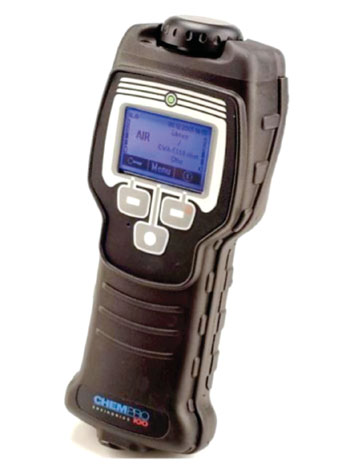Electronic Nose Sniffs Out Prostate Cancer
By LabMedica International staff writers
Posted on 19 May 2014
Soon it may be possible to make a rapid, early diagnosis of prostate cancer using a noninvasive electronic nose that sniffs a urine sample.Posted on 19 May 2014
Prostate cancer is the second most common malignancy in men and one of the leading causes of death from cancer and it is difficult to diagnose and make reliable prognoses about the disease because it does not appear consistently in prostate tissue.

Image: The ChemPro100 Handheld Chemical Detector (eNose) (Photo courtesy of Environics).
Scientists at the University of Tampere (Finland) tested 50 patients with confirmed prostate cancer and 24 samples from 15 patients with benign prostatic hyperplasia. Fifteen patients provided urine preoperatively and nine patients provided samples three months postoperatively and all patients were scheduled to undergo robotic assisted laparoscopic radical prostatectomy or transurethral resection of the prostate.
The electronic nose or eNose used in the study was a commercially available model ChemPro100 (Environics Inc.; Mikkeli, Finland) based on the ion mobility spectrometry principle. The device contains an ion mobility cell that consists of eight electrode strips producing two-channel output and a metal oxide based semiconductor cell. Together these sensors produce 18-channel measurement data. The sensors do not specify molecules, but produce a characteristic smell print of the sample.
The team found that the eNose, which analyzed molecules in the urine headspace, was able to discriminate prostate cancer from benign prostatic hyperplasia with a sensitivity of 78% and a specificity of 67%, on a par with the prostate specific antigen (PSA) tests. Niku Oksala, MD, PhD, DSc, the senior author of the study said, “PSA is known to correlate positively with prostate volume, which is a potential source of diagnostic error when comparing prostate cancer with benign disease. According to our current analysis, prostate volume did not affect the eNose results, potentially indicating high specificity of our sensor array to cancer.” The study was published online on February 25, 2014, in the Journal of Urology.
Related Links:
University of Tampere
Environics Inc.












.jpg)
